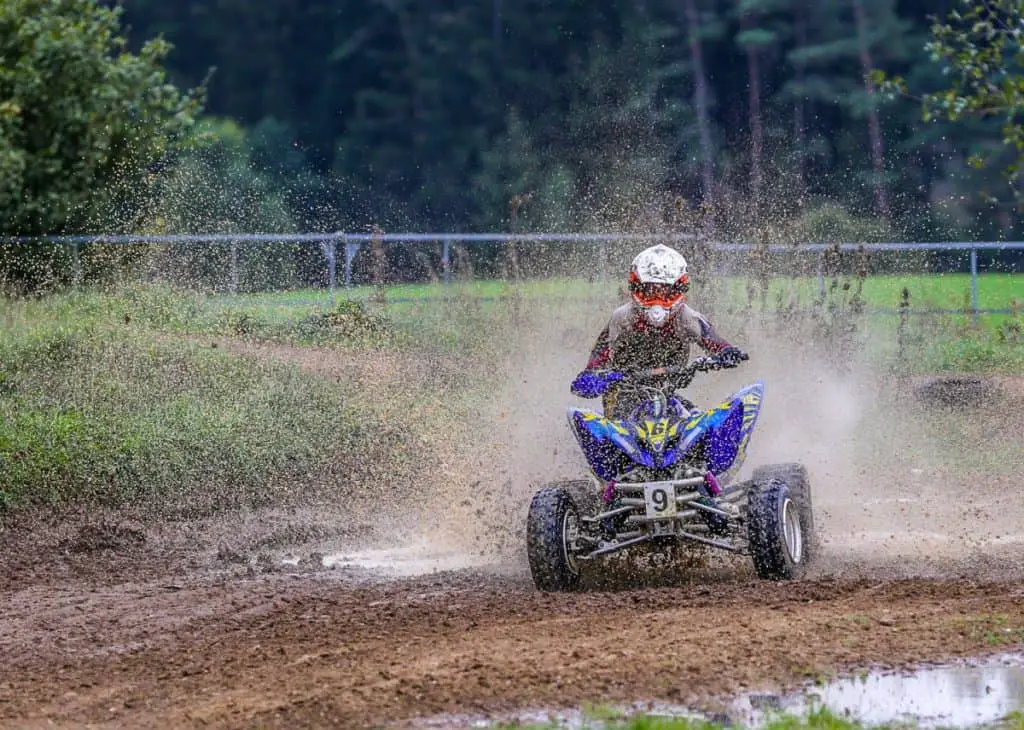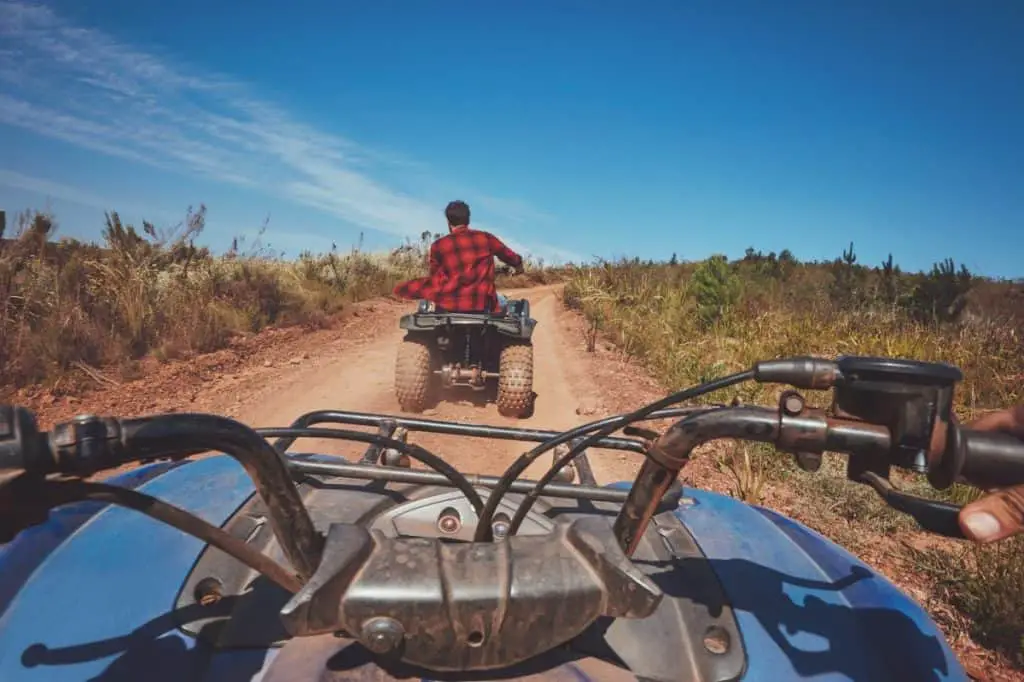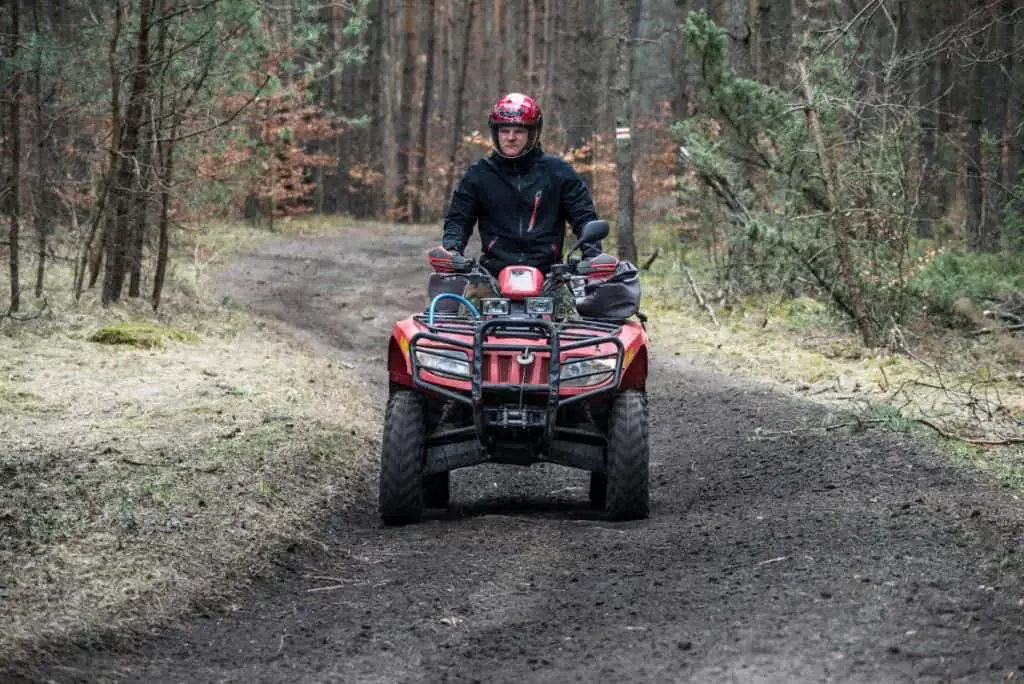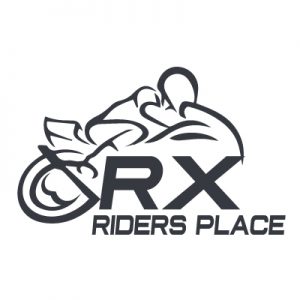Quads and ATVs are great as a utility vehicles, for recreation, and for racing. These types of vehicles can have a steering damper installed stock on the vehicle, or they can be installed later. A steering damper isn’t something that’s common knowledge so in this article, I will explain what a steering damper does for a quad.
It slows the rate that the steering turns from side to side. It’s installed to prevent the steering wheel from jerking side to side quickly which can cause a crash. This occurs if you hit a bump at high speed or if the front wheels leave the ground and land at an angle.
There are a few different types of steering dampers and they are designed in a special way where they don’t inhibit steering but also provide safety if the steering wheel jerks quickly. Below, I will explain how they work, some video examples of what they stop from happening, and whether you need one for your quad or ATV.

Is a Steering Damper Necessary on an ATV
A steering damper is added to an ATV and most ATVs don’t come with one. A steering damper is highly recommended for a 2-wheeled motorcycle. But, here’s whether is necessary for an ATV.
Overall, a steering damper is only necessary on an ATV used for racing. All other ATVs for the most part don’t need a steering damper. Exceptions are if you ride it very fast on rough terrain. But, this is not advised generally because it’s dangerous with or without a steering damper.
The main purpose of a steering damper is to stop the steering from snapping back. For example, if you’re turning a corner and you hit a bump, the force of the bump can cause the steering to bounce in the opposite direction. This means the ATV or quad will be facing one way but the steering will be facing the other.
A very dangerous situation. When this happens the natural instinct is to turn the steering wheel back in the direction you’re going. This can cause the ATV or quad to lose control and usually it causes it to slide out and it will tip, or it will crash into any obstacles that are around. Such as trees or fences that aren’t on the path you’re riding.
Here’s a video example of what a tank slapper is:
It’s less common in cars because the rear wheels don’t turn and help to stabilize an ATV. But, it still occurs. On a two-wheel motorbike, it occurs much more frequently because there is only one wheel in the front. One wheel has far less stability and balance than two wheels.
The name tank slapper explains how the handlebars slap side to side on the middle of a motorbike – where the tank is. On an ATV it occurs more frequently if you turn a corner and overcorrect the steering but need to overcorrect it again. However, it doesn’t occur at a very fast rate as it does on a motorcycle where the handlebars go completely out of control.
The best way to stop a tank slapper is to slow down as safely as possible. As you can see in the video above.
The 3 types of steering dampers how they differ and when to use them
A steering damper is also called a steering stabilizer. There are a few different steering damper configurations. There are:
- Radial steering dampers – are mounted at the top of the steering column.
- Linear steering dampers – are mounted to the bottom of or side of the steering column.
- Electronic steering dampers – they vary the dampening based on the speed of the bike.
The design of steering dampers is such that they don’t inhibit steering. They only begin to dampen if you turn the steering wheel very quickly. However, if you steer normally the steering damper isn’t engaged.
The steering wheel will only turn quickly when a motorbike begins to initiate a tank slapper. This can occur when the handlebars snap back quickly from hitting a bump, or if the front wheels leave the ground and land at an angle according to MSC Moto.
What ATVs/Quads come with steering dampers already installed
Virtually no ATVs or quads come with a steering damper. These are aftermarket and need to be purchased separately. Some are sold in the range of about $200 whereas others are can be $500 and even $1000. So, then the question is do you really need one.
Many people do get steering dampers for their ATV as reported on many online forums. They say that it is very good and they say it makes a big difference. At the end of the day, it’s perfectly fine to use the stock steering setup your ATV has, and it’s not necessary to get a steering damper or seek out an ATV with a steering damper.
Many ATVs have power steering which does a good job at stabilizing the steering. The main reason is that because ATVs have 4 wheels they’re much more stable than 2-wheeled motorbikes. For these, reasons a steering damper is generally only necessary for added safety on sport ATVs.
Sport ATVs involve fast speeds and fast turns. Making the steering more likely to jerk back in the opposite direction, or requiring the rider to overcorrect in the opposite direction. Provided you drive a utility and recreation ATV safely as recommended in the owner’s manual of all ATVs you shouldn’t need a steering damper.

Reasons it can be worth it to get an aftermarket steering damper
Because ATVs generally don’t come with a steering damper stock, it’s important to have an idea about when it makes sense to get a steering damper and when it’s not necessary. Here are the main reasons:
- It acts as an insurance policy – it’s better to have it and not need it than need it and not have it
- If you experience head shake currently on your ATV or the steering regularly moves fast uncontrollably
It acts as an insurance policy – better to have it and not need it
It is safer to have a steering damper. The same logic that applies to getting insurance applies to getting a steering damper. It’s generally rare for an ATV to experience head shake. And for the steering to snap back and move fast and uncontrollable. Particularly, if you ride safely and don’t go very fast especially on uneven terrain.
But, in the event that you’re riding one day and you do experience either of these a steering damper can save you from a serious crash. Therefore, it will give you more peace of mind and is a lot safer.
You currently get head shake or fast uncontrollable moves of the steering
Head shake is where you’re riding and the steering begins to wobble from side to side very slightly. This is typical of motorcycles at high speed but can also occur with ATVs, primarily if you’re going very fast on uneven terrain.
If you experience this regularly because of how you use your ATV, then it’s a good idea to get a steering damper. Because it will provide you with much more safety. This is one of the primary things that a steering damper prevents.
With that said it’s generally best to optimize your suspension by getting it tuned to your body weight. This provides the best bang for the buck compared to getting a steering damp.

Will a Steering Damper Tighten the Steering
Steering dampers can come stock on motorbikes but generally don’t come with ATVs. The role of a steering damper is to make the steering slower so that it doesn’t jerk quickly. It’s reasonable to assume that this will cause the steering to be tighter during normal operation but here’s whether this is actually the case.
A steering damper does tighten the steering. There is a noticeable difference to the steering after you install a steering damper. Steering dampers can be adjusted by tightening them manually. Some also have low, medium, and high settings that you can switch between easily.
The feel of steering that has a steering damper is much different to one without, especially if it’s installed very tight. If it’s installed tightly it can be quite laborious to make tight turns at very slow speeds.
But, if it’s set too loose it won’t provide much dampening. Therefore, you should need to try it out and set it as tight as is comfortable given how you ride your ATV/quad.
Is a Steering Stabilizer the Same as a Steering Damper
There is also what’s called a steering stabilizer. Its name seems to give the impression that it does something very similar to a steering damper. So, below I’ve summarized whether they’re the same thing.
A steering stabilizer and a steering damper are the same things. They are two different phrases for the same component that is installed onto the steering. It generally refers to one used for motorcycles rather than cars. This is because motorcycles are much more susceptible to steering wobble.
The four wheels of a car make the steering much more stable. The wheel placement on a car also provides more stability. Because it’s the wheels are quite far back from the front of the car. The design of the steering on a motorcycle is such that it creates a flexible end on the front.
The flexible front of a motorcycle stays straight for the most part due to the inertia of the motorcycle and because you hold it in place. But, if it starts to get off-center at high speeds it starts to whiplash back and forward uncontrollably. And the entire motorcycle begins to wobble back and forth.
The force of the steering wheel is too much to hold it steady, and you need to as safely as possible slow the motorcycle down. On a car, the weight of the engine and the fact that there are two tires drastically reduce how easy it is for the wheels to move from side to side.
What Bump Steer Caused Is Caused By
Bump steer is a potentially dangerous occurrence that can happen when driving a vehicle or bicycle. In general, it causes a loss of traction of the wheels and can cause the driver to need to overcorrect which can cause a loss of control. This is what causes bump steer.
Bump steer is caused by the wheels leaving the ground and hitting the ground again at an angle. The inertia of the vehicle is moving straight ahead but the wheels are pointing in a different direction. This causes a loss of traction as the vehicle changes direction suddenly rather than gradually.
When the front tires hit the bump the force of the tires hitting the bump turns the wheels either left or right and also lifts them off the ground. When the tires land the vehicle is already heading straight ahead with a lot of momentum. Changing the direction in a split second generally causes the tail to slide out.
Or the steering wheel to snap back quickly which causes the entire vehicle or bike to lose traction. It is similar to if you were driving a car straight ahead and then suddenly turn the steering wheel very quickly in either hard left or hard right.
This is desirable in car racing sports like drifting where it’s done on purpose. And there is a skill in controlling how the car skids. It can be controlled with extreme precision. But, for an average driver, the loss of traction can cause a vehicle such as a quad or ATV to lose control.
On a straight road, the vehicle can leave the road and end up crashing into anything that is on the sides of the road. Here’s a video of how quad drifting works so you can see what the sudden change in direction of the front wheels does:
Bear in mind that drifting on an AV is extremely dangerous and the owner’s manuals of all ATVs discourage losing traction.

